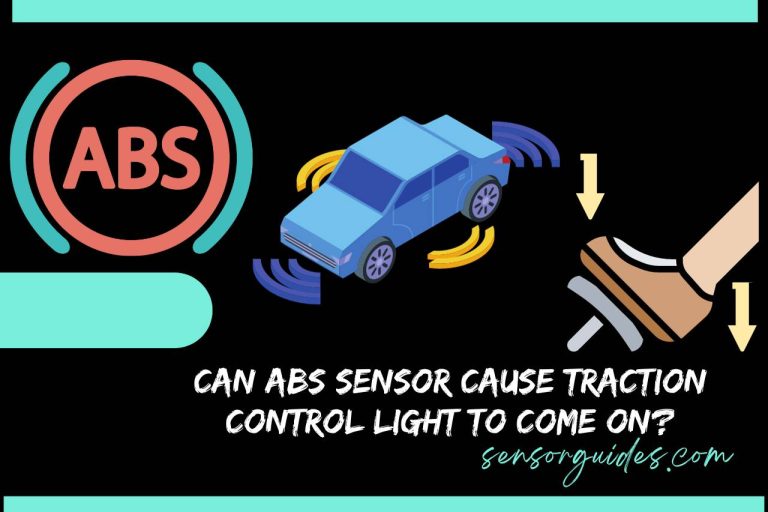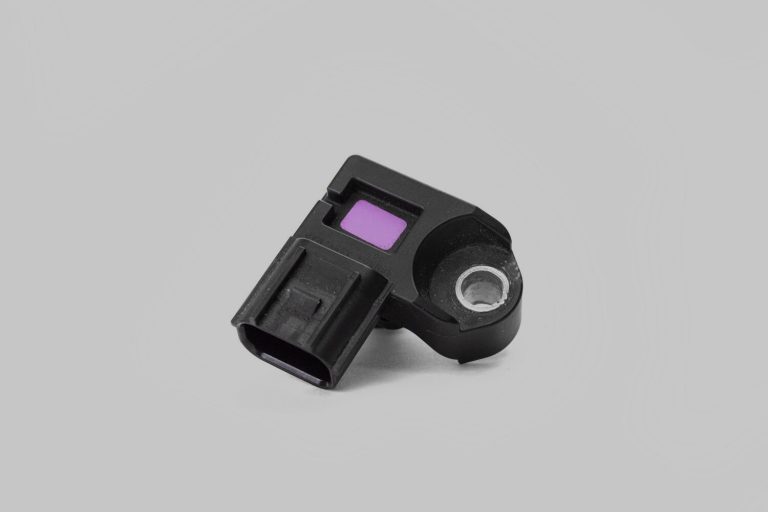Sun Load Sensor Failure Symptoms; Causes, Fixing and Preventing
A sun load sensor is a vital component of a vehicle’s air conditioning system, responsible for measuring the intensity of sunlight and temperature to adjust the climate control system’s performance.
A malfunctioning sun load sensor can affect the comfort of the driver and passengers, so the most common Sun Load Sensor Failure Symptoms are:
- Auto Dimming of the lights
- Inconsistent temperature control
- Inaccurate temperature readings
- Difficulty defrosting windows
- Increased fuel consumption
- Warning lights on the dashboard
In this article, we’ll discuss the different types of sun load sensors, the causes of failure, diagnosis, repair, and prevention methods to ensure optimal performance of your vehicle’s air conditioning system.
Table of Contents
What is a sun load sensor?

A sun load sensor is a device that measures the intensity of sunlight and temperature, which is used by a vehicle’s air conditioning system to adjust its performance. The sensor is typically located on the dashboard or rearview mirror, and it works by detecting the amount of light that passes through it and converting it into an electrical signal.
To measure the intensity of sunlight, the sun load sensor uses either a photodiode or a thermistor. A photodiode is a semiconductor device that converts light into an electrical current, while a thermistor is a resistor that changes its resistance in response to temperature changes.
Once the sensor detects the amount of light or temperature, it sends a signal to the vehicle’s climate control system, which adjusts the AC’s performance to maintain a comfortable temperature inside the car. This process ensures that the driver and passengers are comfortable while driving, regardless of the outside temperature.
There are two primary types of sun load sensors, photodiode sensors, and thermistor sensors. Photodiode sensors are more commonly used in modern vehicles and are more accurate, while thermistor sensors are less expensive and require less power to operate.
Sun load sensor location
The sun load sensor is typically located on the dashboard of the vehicle, close to the windshield or on the rearview mirror. The exact location may vary depending on the make and model of the car.
In some cars, the sun load sensor may be located in the center console or on the roof of the car. It is best to refer to the owner’s manual for the specific location of the sun load sensor in your car.
What are Sun Load Sensor Failure Symptoms?

A malfunctioning sun load sensor can cause several symptoms that can significantly impact the comfort of the driver and passengers, including:
Main symptom – Auto-dimming of the lights
A bad sun load sensor can cause auto-dimming of the lights, and this is because the sun sensor’s primary role is to enhance driving comfort by adjusting the interior lighting based on ambient light conditions. When it senses bright sunlight, it may dim the interior lights to reduce glare, and vice versa in low-light conditions.
Other possible symptoms
- Inconsistent temperature control
A faulty sun load sensor can cause inconsistent temperature control, which can make it difficult to maintain a comfortable temperature inside the car. The AC may turn on and off frequently or blow hot air instead of cold.
- Inaccurate temperature readings
Another symptom of a faulty sun load sensor is inaccurate temperature readings. The AC system may display incorrect temperature readings, making it challenging to adjust the climate control system to maintain a comfortable temperature inside the car.
- Difficulty defrosting windows
A malfunctioning sun load sensor can cause difficulty defrosting windows. The AC system may not be able to adjust the temperature and airflow correctly, leading to foggy or icy windows, which can impair the driver’s vision.
- Increased fuel consumption
A faulty sun load sensor can also cause increased fuel consumption. The AC system may work harder than necessary, increasing fuel consumption and reducing fuel efficiency.
- Warning lights on the dashboard
Finally, a malfunctioning sun load sensor can cause warning lights to appear on the dashboard. The AC system may detect a fault and trigger a warning light, indicating that there is a problem with the AC system.
What are the Causes of sun load sensor failure?
Like any other automotive sensor, the sun load sensor can fail due to several reasons, including:
01. Physical damage: The sun load sensor is located on the dashboard or rearview mirror, making it vulnerable to physical damage. An impact, such as a collision, can damage or break the sensor, leading to a malfunction.
02. Electrical failure: The sun load sensor is an electrical component, and like any other electrical component, it can fail due to electrical issues. A loose or corroded connection or a blown fuse can cause the sensor to fail.
03. Exposure to harsh weather conditions: The sun load sensor is exposed to harsh weather conditions such as extreme heat, cold, moisture, and dust, making it prone to failure.
04. General wear and tear: The sun load sensor, like any other component, can deteriorate with time and usage, leading to a malfunction.
How to diagnose Sun load sensor failure?
If you suspect a malfunctioning sun load sensor, you can diagnose the problem through the following methods:
How to test the sensor using a multimeter?
You can test the sensor’s resistance using a multimeter to determine if it is functioning correctly.
To test a sun load sensor using a multimeter, follow these steps:
- Park the vehicle in bright sunlight.
- Turn the ignition to the ON (II) position, but do not start the engine.
- Locate the sun load sensor. It is typically located on the vehicle’s dashboard, windshield, or roof.
- Set the multimeter to the DC volts (V) setting.
- Connect the positive (+) lead of the multimeter to the signal wire of the sun load sensor.
- Connect the negative (-) lead of the multimeter to a ground.
- Note the voltage reading on the multimeter.
The voltage reading should be between 0.5V and 1.0V. If the voltage reading is higher or lower than this, the sun load sensor may be faulty.
To test the sun load sensor further, start the engine and run the air conditioning on the highest setting. After a few minutes, cover the sun load sensor with a dark object. The voltage reading on the multimeter should increase. If the voltage reading does not increase, the sun load sensor is faulty.
How to Repair sun load sensor failure?
If the sun load sensor is diagnosed with a malfunction, the most common solution is replacement. The cost of replacing the sun load sensor may vary depending on the car’s make and model and the labor cost. On average, the cost of replacing a sun load sensor can range from $100 to $400.
Whether to attempt a DIY repair or seek professional help depends on the individual’s level of expertise and comfort with handling car repairs. However, it is essential to keep in mind that tampering with sensitive electrical components can cause more harm than good, leading to further complications.
sor.
Preventing sun load sensor failure
Like any other component in the car, the sun load sensor requires regular maintenance to prevent failure. Here are some tips to prevent sun load sensor failure:
- Regular maintenance: Routine maintenance, such as cleaning the sensor’s surface, checking the wiring for damage, and replacing the sensor if necessary, can help prevent failure.
- Avoiding exposure to harsh weather conditions: The sun load sensor is exposed to harsh weather conditions, such as extreme heat and moisture, leading to failure. It is best to park the car in a shaded area and use a car cover during hot weather conditions.
- Protecting the sensor from physical damage: The sun load sensor is located on the dashboard or rearview mirror, making it prone to physical damage. Avoid placing objects on the dashboard or rearview mirror that can damage the sensor.
How to fix “Sun load sensor short circuit to ground”?
A short circuit to ground in the sun load sensor can cause the sensor to malfunction or fail. This occurs when an electrical current flows from the positive wire of the sensor directly to the ground wire without passing through the intended circuit.
A short circuit to ground can occur due to a damaged or worn wire, an electrical component’s failure, or incorrect wiring. Symptoms of a short circuit to ground in the sun load sensor may include:
- Diminished AC performance: The air conditioning system may not cool as effectively as it should.
- Inconsistent temperature control: The temperature control may be inaccurate or difficult to control.
- Inaccurate temperature readings: The temperature readings on the dashboard may be incorrect or fluctuate.
- Difficulty defrosting windows: The defrosting function may not work correctly, leading to visibility issues.
- Warning lights on the dashboard: The dashboard may display warning lights or error codes related to the sun load sensor.
If you suspect a short circuit to ground in the sun load sensor, it is best to seek the help of a professional mechanic. They will have the necessary tools and expertise to diagnose and repair any issues with the electrical system. They may need to replace the sensor or repair the wiring to fix the issue.
Conclusion
In conclusion, the sun load sensor is a crucial component in the AC system of a car. Any issues with the sun load sensor can significantly impact the driver’s and passenger’s comfort and the car’s fuel efficiency. Regular maintenance and care can help prevent sun load sensor failure, and it is essential to address any issues with the sensor as soon as possible to avoid further complications.







One Comment